A Lizard, a Pyramid, a Bee, a Slipper ….
Until a few years ago, the only orchid I was aware of was the Moth orchid (Phalaenopsis) and only because I painted it as one of my studies for the RBGE Botanical Illustration diploma. I later painted a Lady’s slipper (Cypripedium) growing at the Glasgow Botanic Gardens. They are both very different but each one I would have confidently identified as orchids.
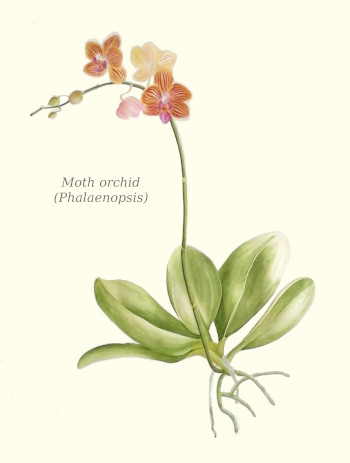
Moth orchid
On a recent walk through an undisturbed area outside Paris, I discovered several plants I didn’t recognise but it certainly didn’t cross my mind they could be orchids. They were completely different from the elegant and exotic looking specimens I had previously diligently studied and painted.
Further investigation over the next few days, I realised that what I had found camouflaged and thriving in the undisturbed wild verges, were four species of the Orchidaceae family – none of which remotely resembled the polished shiny specimens mentioned above.
I momentarily daydreamed about being the new Linnaeus (with an H) of the twenty first century. They looked quite ‘smart but casual’ demanding closer inspection, which told me here is something quite special even if it turned out they are not particularly rare.
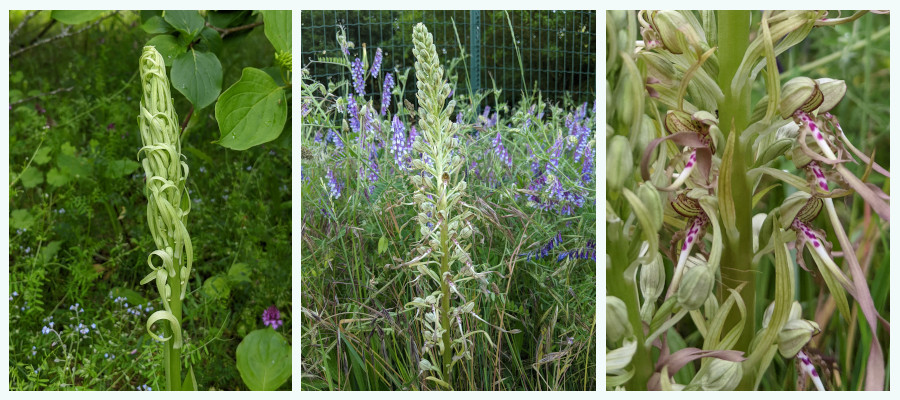
So, in addition to the Phalaenopsis and Cypripedium, my repertoire of orchids has now expanded to include those below:-
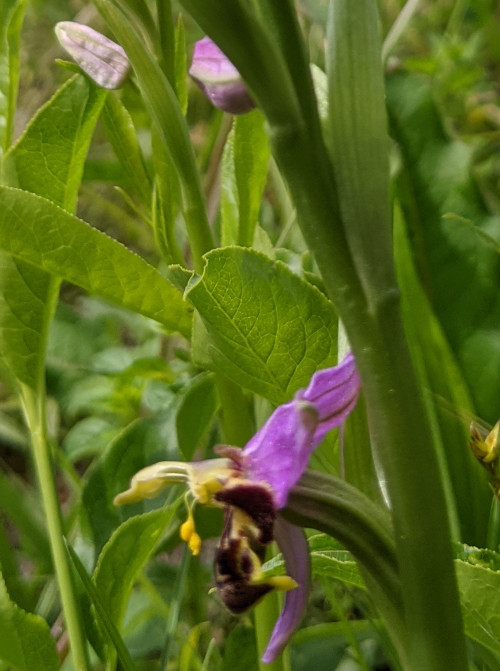
The Bee orchid is the least common among my finds as I have only come across two – both in a more open, sunnier area. It’s a little more chic due to the little pouch resembling a bee. Probably why it is so named.
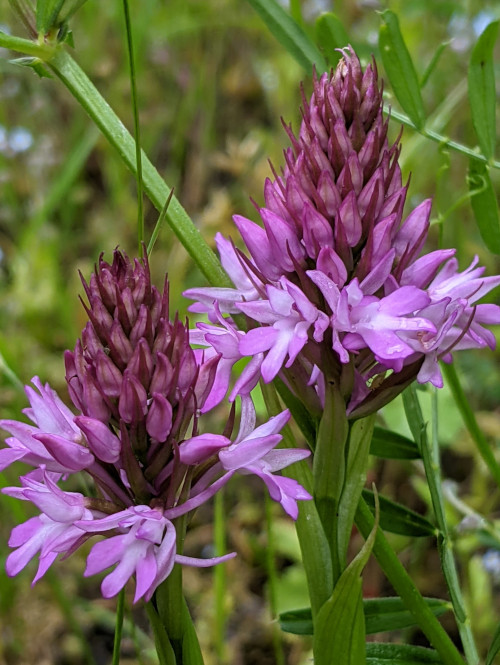
The Pyramidal orchid is very aptly named after its neat, exquisite form and is very pretty as the petals unfurl from the bottom of the flower head upwards.
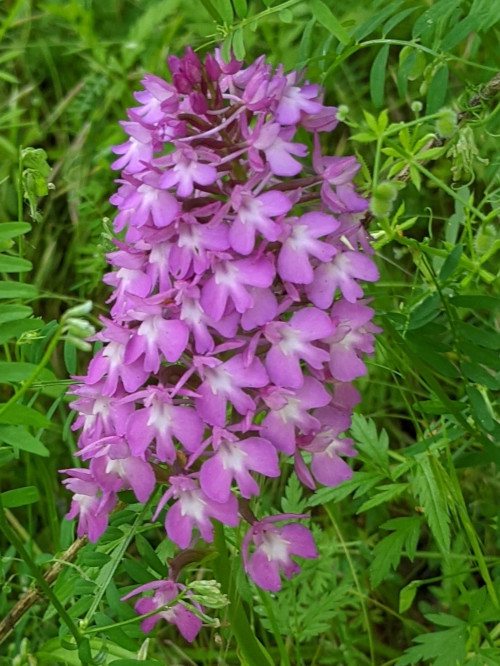
I originally identified this as a Lady orchid but now I’m not so sure as it shows no sign of the spots around the neck of the petals. It could be a mature Pyramidal orchid which tends to lose its pointed head as the flowers blossom at the top of the flower head. (Although it does seem to have a longer form). Identification to be confirmed.
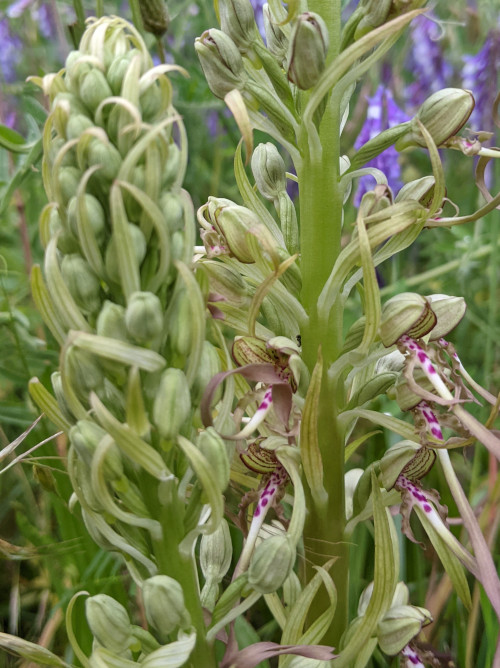
The Lizard orchid is quite unruly and messy in habit when flowering and it is not until you look very closely that you see the unusual purple spots on otherwise insignificant straggly flowers. It is also a bit smelly. However, there is something quite eerily enthralling and beautiful about its very unusual form.
All in all, I think I prefer those growing in the wild as they are less flamboyant than the Phalaenopsis or Cypripedium, but then when I take another I look at these ‘shinier’ varieties l do like them too.
They are all so different that it is difficult to believe they are from the same Orchidaceae family.
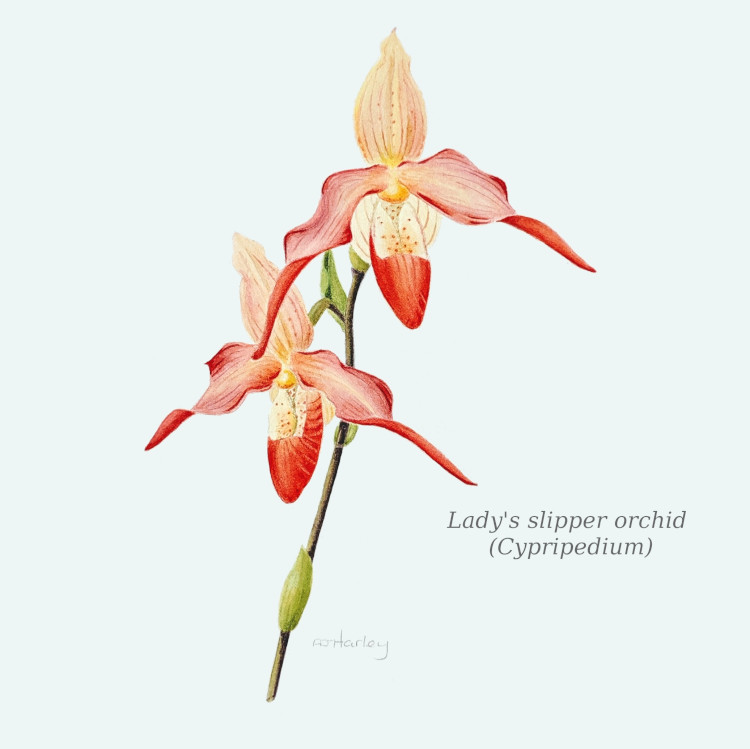
Jill 11th August 2021
So happy to have found your website, Alison, and love reading your stories here. I also am just as thrilled to have been with you on one of your wonderful walks together and for you to show us a wild orchid. Who would have thought? Thanks for making me look on walks now with my eyes more open to the beauty of the wild. Looking forward to many more lovely posts like this.
Jill x
Jill 11th August 2021
Gosh, and I completely forgot to mention the most important part – I absolutely adore your beautiful artwork of the Lady’s Slipper. You’re so talented!
alison 11th August 2021 — Post author
Jill thank you so much for your lovely comments I am thrilled to bits! You spotted the Lizard orchid then? It will be a while before I can tackle that one. I have thoroughly enjoyed our nature walks too and am looking forward to the next one.
Alison x